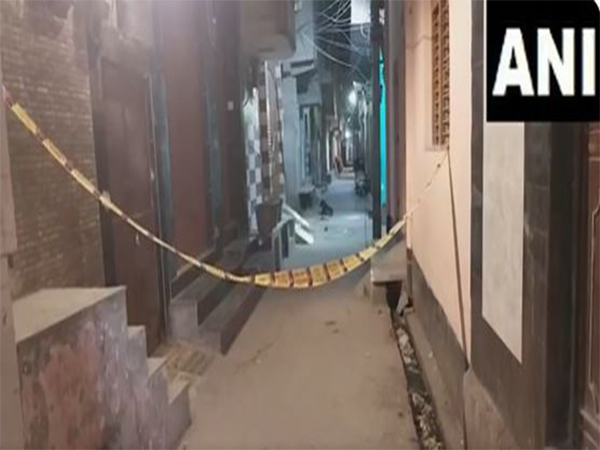'Nepal's border issue with India is just politics'
May 21, 2020

Kathmandu, [Nepal] May 21 : Nepal's recent friction with India over a land dispute is just politics for domestic consumption, according to a leading Nepali analyst Man Bahadur Basnet writing in Kathmandu Post.
Recently, Nepal released a new political map that shows the areas of Kalapani, Limpiyadhura, and Lipulekh within its borders. However, India regards these areas as part of its territory.
Basnet, who is also a journalist, Nearly two months into the lockdown, around 400 individuals from these two villages, including Bohara, remain in Khalanga, waiting to make their way home. Chhangru, Tinkar and Khalanga are all Nepali territory but getting from one to the other requires traversing through India, as there are no roads or foot trails on Nepali land.
"We haven't been able to return to our settlements due to the sealed border," said Ashok Singh Bohara, chairperson of the rural municipality's Ward No 1. "There is no foot trail to reach the villages through the Nepal side" they were quoted as saying.
The local administration was preparing to help the villagers return to their homes when the Lipulekh dispute erupted in Nepal with India announcing the inauguration of a road link via Lipulekh to Kailash Mansarovar.
Protests erupted in Kathmandu, worrying Nepalis living along the western border.
"We rely completely on India for transportation and supplies," Bohara said, who worries that any drastic reaction from India will imperil their existence.
Chhangru lies east of the Mahakali river in Nepal with Gabryang across the river on the Indian side. There are less than two kilometres between the two villages but there is a stark difference between the lives of the residents of the two villages.
Gabryang has easy access to daily essentials at a subsidized rate provided by the Indian government.
According to Bohara, the Indian government provides rice at INR 2 to 5 (Rs 3.5 to 8) per kg in Gabryang while Chhangru locals pay Rs 110 to 130 for a kilo of rice. There is a marked difference in the prices of essentials like sugar, salt and oil too.
According to locals, Indian security forces in the area extend help when necessary to the local population, dropping foodstuff by helicopters and airlifting patients in need of medical attention.
"The Indian government shows that it's always there for the villagers. It never lets its citizens go hungry," said Dan Singh Bohara, a former Deputy Inspector General of the Nepal Police who was born and raised in Chhangru.
"In comparison, there is nothing the Nepali government does for its citizens."
The Kathmandu Post wrote, "Locals say there used to be an old horse track connecting Dumling and Chhangru but it was closed off during the Maoist insurgency and fell into disrepair. Meanwhile, a motorable road was constructed across the border in India and in 1999, India started constructing the link road that has so incensed Nepalis recently".
The road begins in Tawaghat in India's Dharchula, Pithoragarh district and ends at Mansarovar in the Tibet Autonomous Region.
As India started carving out roads, it began to disrupt the Mahakali's currents, further damaging roads in Nepal. But Nepali authorities, all the way in Kathmandu, paid little attention, said Dan Singh.
Nepal claims Kalapani, Lipulekh and Limpiyadhura, which are lumped together in a region that borders Darchula in the northwestern corner of the country. But border disputes have continued for decades. India has stationed its troops in Kalapani since 1962.
Back in November, India reasserted Kalapani as part of its territory by placing it within its borders in a new political map published after New Delhi divided Jammu and Kashmir into federal territories.
As protests erupted, Kathmandu sought a date for talks with India, twice, but Delhi failed to respond.
The issue eventually fizzled out, with no concrete progress.
Locals believe that politicians in Kathmandu employ the border dispute with India to their own benefit, but rarely do anything for citizens who have been living precariously on the border for decades.
"Protests against Indian encroachment continue in Kathmandu, but nobody comes here," said ward chair Bohara. "Just what did the government do for the locals who are the most trusted guards of the border?"
As protests erupted in Kathmandu against India's opening of the road link via Lipulekh on May 8, Prime Minister KP Sharma Oli came under immediate pressure from leaders of the opposition as well as ruling parties.
On Monday, the Cabinet swiftly approved a new political map that includes all disputed territories within Nepali borders. A day later, Oli told Parliament that his government would reclaim those lands.
"Kalapani, Lipulekh and Limipiyadhura belong to Nepal and we will get them back," said Oli.
Locals in the region, however, have their doubts. The longer they are neglected by the state, the more vulnerable they will become.



















